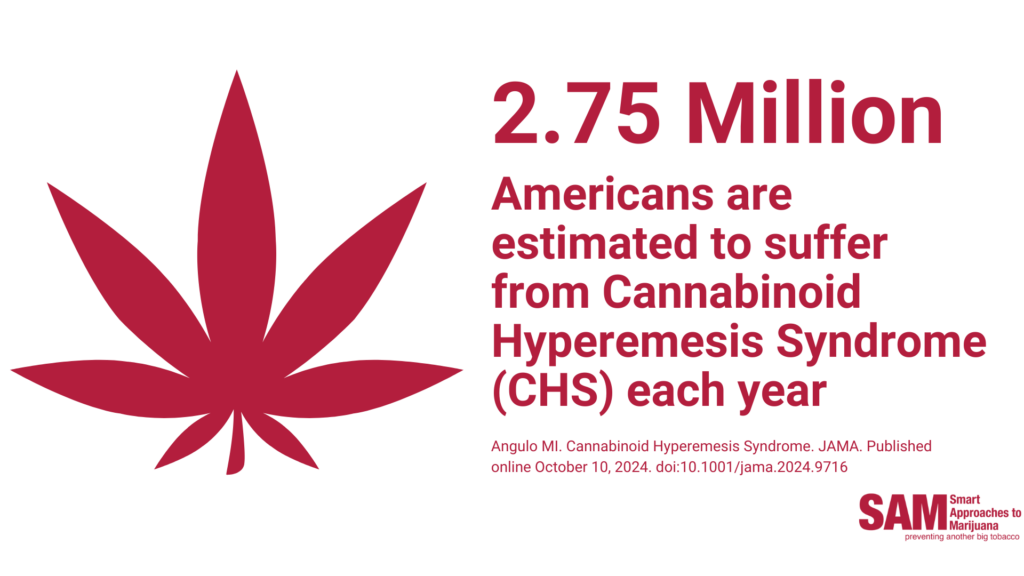
On October 10, the Journal of the American Medical Association (JAMA) published a patient education page titled, “Cannabis Hyperemesis Syndrome.” Cannabinoid Hyperemesis Syndrome (CHS) is characterized by repeated nausea, vomiting, and severe stomach pain after using high doses of tetrahydrocannabinol (THC) over an extended period of time––THC is the psychoactive component of marijuana that makes a user feel “high.” The article explained, “although the exact number of people with CHS is unknown, based on emergency department surveys, CHS is estimated to affect about 2.75 million people in the US yearly.”
The JAMA page continued, “From 2017 to 2021, emergency department visits for CHS doubled in the US and Canada and were most common among males aged 16 to 34 years.”
The New York Times published an article about personal stories related to the harms of marijuana use. One story was from an actor, David Krumholtz, who was one of many who experienced the effects of CHS. After starting to use marijuana again in 2016, David experienced cycles of severe nausea and vomiting, went to the emergency department multiple times, lost over 100 pounds, and would spend 10 hours in a hot bath to try and relieve the symptoms of his condition. He eventually quit marijuana for good and became better. “It seems like such an innocent drug,” Krumholts said, “but for some of us, there is a real danger, a really harmful side effect.”
The patient education page also added that “the rise in CHS coincides with legalization of recreational cannabis and increases in delta-9-tetrahydrocannabinol (THC) concentration in cannabis products.” This trend will likely worsen as the marijuana industry produces and pushes ever-stronger products.
